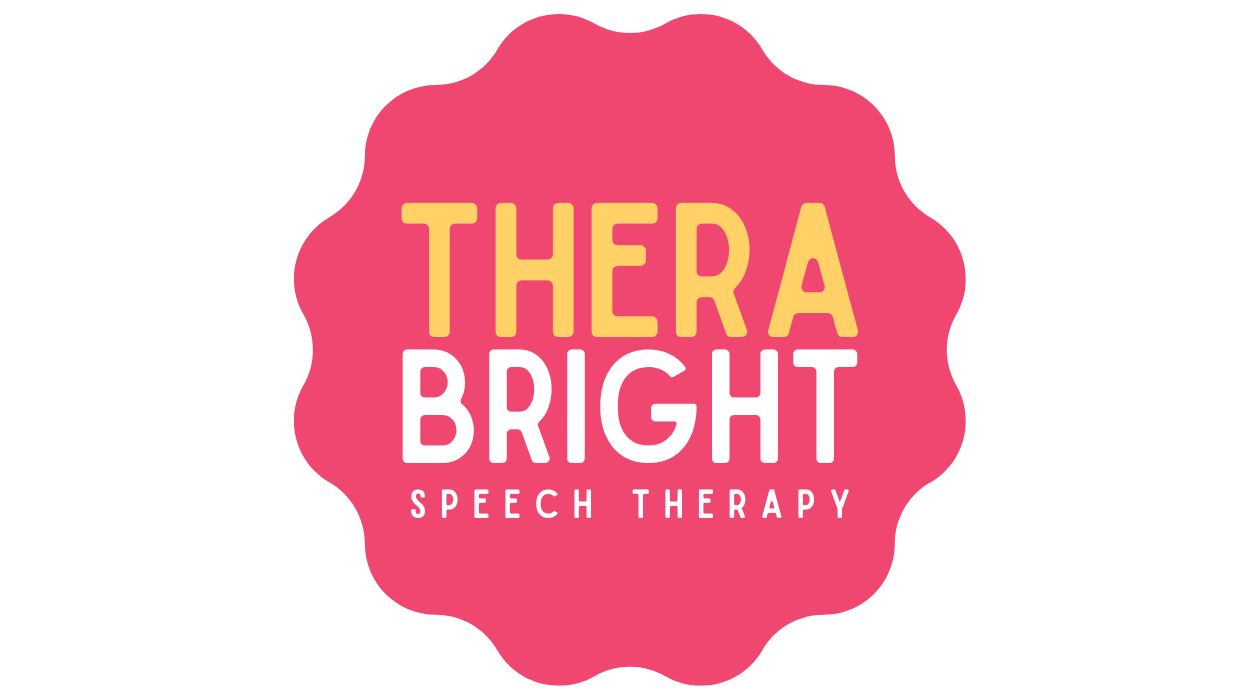Speech Sound Disorders
TheraBright specializes in the treatment of speech sound disorders.
What is a speech sound disorder?
A speech sound disorder is a type of communication disorder when someone has consistent difficulty producing sounds or words correctly. These difficulties may make it harder for others to understand what the child is saying. Children are usually able to be understood by strangers 75-100% of the time by the age of 3. Most children should also be able to produce nearly all speech sounds by the age of 5.
There are different types of speech sound disorders:
Articulation Disorders - difficulty producing specific sounds
For example, producing a distorted "r” or speaking with a lateral, “slushy” lisp
Phonological Disorders - consistent difficulty producing sound patterns or rules
For example, dropping sounds at the end of a word (ca/cat); producing /t/ for /k/ (tow/cow) or /d/ for /g// (dough/go); dropping sounds from consonant blends (nake/snake, boom/broom); leaving off syllables in multi-syllabic words (nana/banana), and many more
Motor Speech Disorders - difficulty with planning or controlling the muscles needed for speech; this may include childhood apraxia of speech (CAS) (where the brain has difficulty planning and sequencing the movements for speech) or dysarthria (weak muscles used to produce speech). Motor speech disorders are more rare in children.
For example, not producing words the same way each time or saying shorter words more clearly than longer ones (CAS); slurred or mumbled speech that is too slow or too fast (dysarthria)
Speech sound disorders can also be related to orofacial myofunctional disorders, which are patterns of abnormal movement or positioning of the muscles of the face, mouth, and tongue that may affect speech and swallowing. This may lead to difficulty with certain speech sounds, such as tongue thrust leading to distorted production of /s, z, t, d/, and more.
Can a speech sound disorder impact my child’s ability to learn to read?
The American Speech-Language-Hearing Association reports the following:
Up to 23% of 4- to 6-year-old children were estimated to have Speech Sound Disorders (Eadie et al., 2015; Jessup et al., 2008; McKinnon et al., 2007).
Poor speech sound production skills in kindergarten children have been associated with lower literacy outcomes, especially in children with concomitant language or phonological awareness difficulties (Hayiou-Thomas et al., 2017; Overby et al., 2012; Peterson et al., 2009). Approximately 25% of children receiving school-based speech services may also qualify for reading-related services (Tambyraja et al., 2020).
TheraBright recognizes the potential connection between speech sound disorders and later reading success, and is able to incorporate strategies and interventions which support both speech sound development and reading success within therapy sessions.
Who can treat a speech sound disorder?
Speech Language Pathologists (a.k.a SLP, Speech Therapist) are the only professionals able to diagnose and treat speech sound disorders.
I think my child may have a speech sound disorder. Where can I learn more?
Contact us to schedule a consultation to discuss your child’s needs and determine if an evaluation and speech therapy might be appropriate! If it is determined that your child does have a speech sound disorder, the SLP will talk you through your child’s specific challenges and collaborate with you to determine a plan for remediation.


